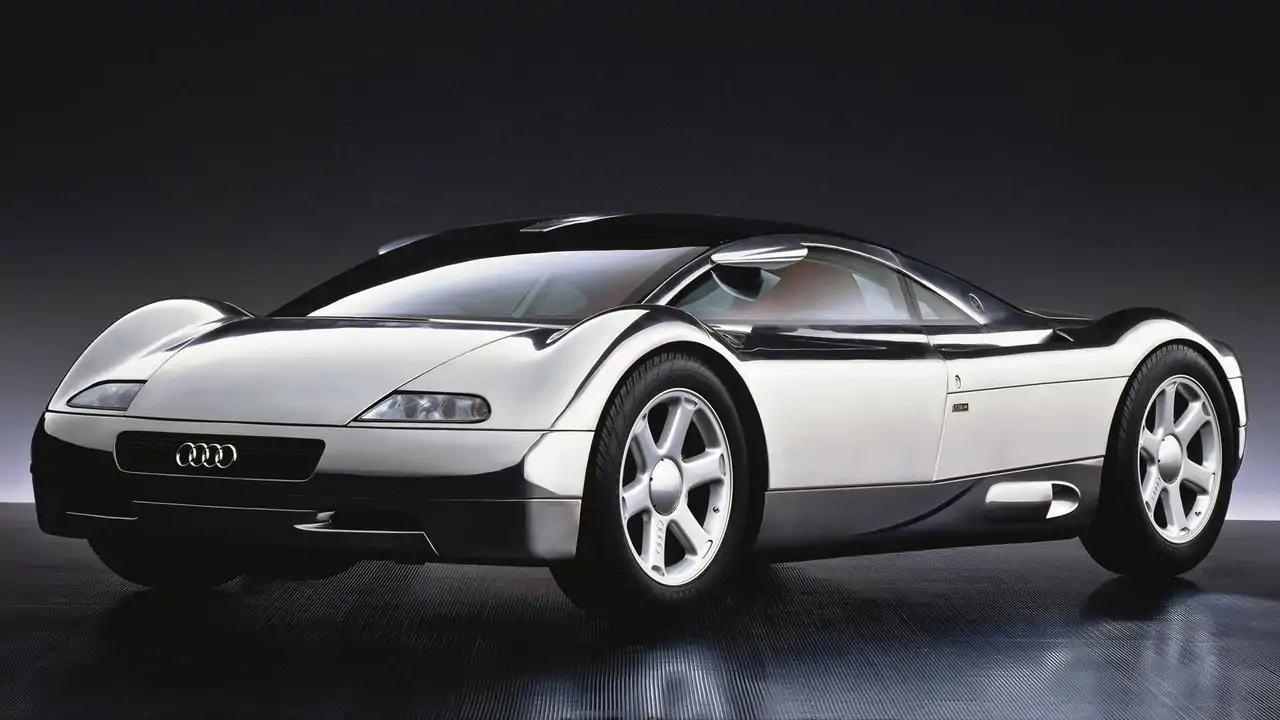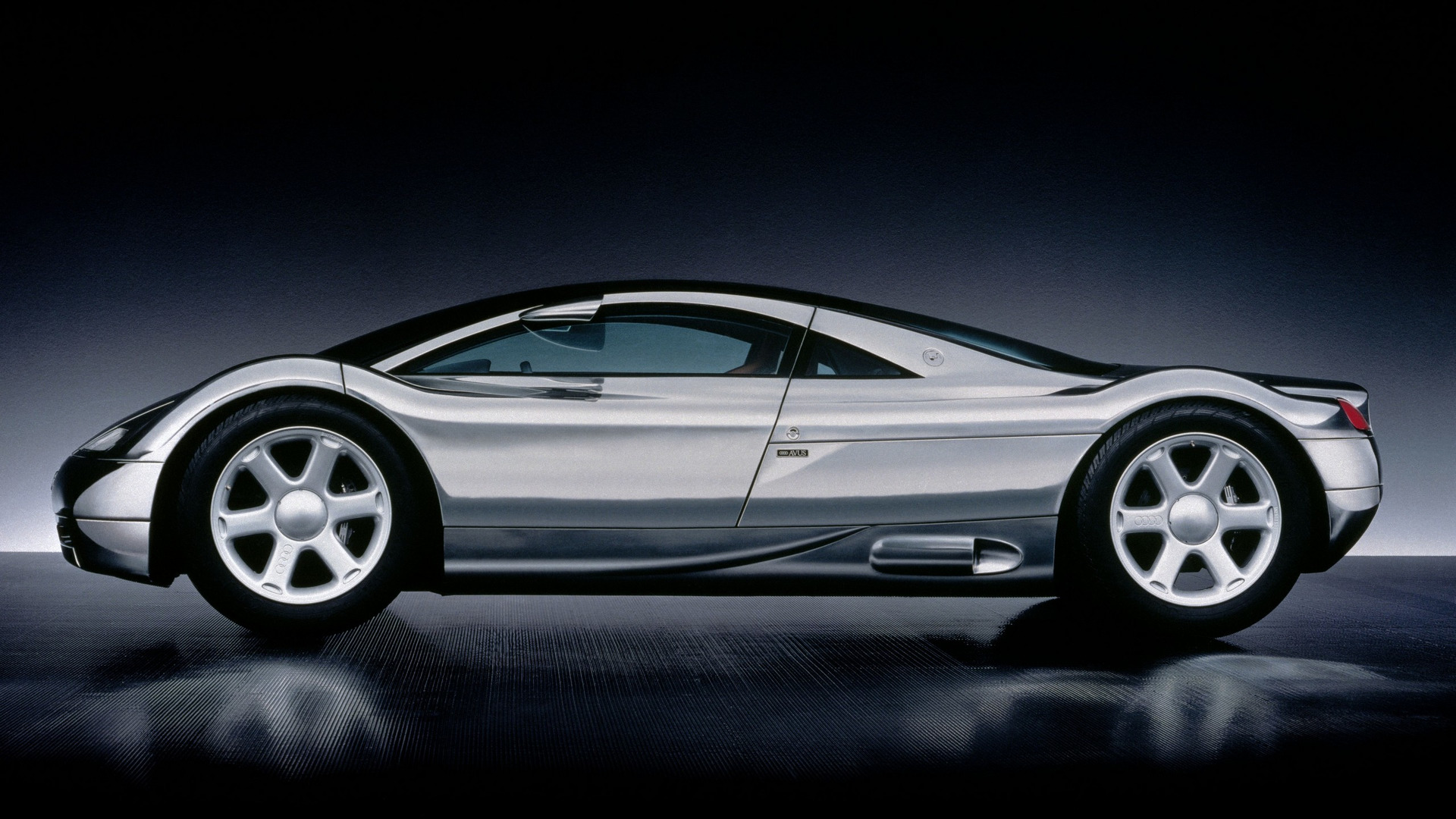The precursor to the R8 featured a fake W12 engine, wrapped in an aluminum body and mounted in the middle.
Why It Matters Now:
The Avus, named after a Berlin race track, was not only Audi’s way to preview its W12 engine, aluminum-intensive construction and to show off what was coming in terms of a mid-engine supercar.

The beautifully constructed body was 1.5-mm thick. It was painted to honor the Auto Union race cars from the 1930s. Its retro design created a beautiful melange with its futurist shape. The car has remained stunning even after 25 years.
The all-wheel-drive Avus Quattro weighs in at a remarkable 1,250 kilograms (2.755 lb) thanks to its aluminum-intensive construction and the Audi Space Frame. The supercar was able to sprint to 62 mph (100 km/h) in three seconds, before reaching a maximum speed of 334 km/h (210 mph).
These are only hypothetical performance numbers as the W12 6.0-liter engine produced 502 horsepower (374 Kilowatts) in the concept. Audi was still working on its twelve-cylinder unit at that time, so the Avus had a dummy engine made from wood and plastic.
It was still a marvel of engineering with three lockable differentials and rear-wheel steering. There was also a NACA-style roof duct. The 20-inch wheels and tires made up about half the car’s height.
Audi rejected offers from at least 12 potential customers who were willing to pay up to $12 million for a road-going Avus Quattro model.
Audi’s Avus Quattro concept is on display in Ingolstadt, Germany, if you wish to see it in all its mirror-like aluminum glory.
